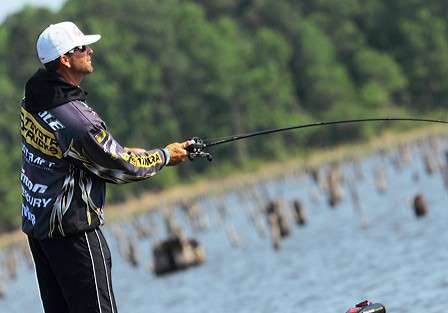
It's coming, and for some of us, it's already here. We're talking about winter, and if it hasn't already in your area, the weather's going to turn cold … maybe even really cold.
What should we bass anglers do? What lures should we throw? Where should we be fishing? Should we be fishing at all? Bassmaster.com asked Gerald Swindle those questions. Here's what he had to say:
Let's dispel the first myth right from the get-go. The bass are still around. They haven't moved to the deepest part of the lake, and they aren't in their true winter patterns. For the most part, all they did when the cold weather hit was drop down to the bottom right where they were.
They're still on the breaks between flats and channels; they're still holding on weedlines; and, they still can be found hiding under stumps in shallow feeding areas.
Fish movement is a process. It doesn't happen all at once or just because we humans think it's turned cold. The days are only a few minutes shorter and a lot of the bass still want to feed before true winter sets in. Don't fall into the trap of thinking the bass all ran out into the middle of the lake last week as fast as they could swim. They didn't. If you want to catch them over the next couple of weeks, you should stay put and slow down.
The first adjustment you should make is mechanical. Switch from a high- or medium-speed reel to a slow-speed reel. That'll help you slow your bait down. (If you don't have a slow-speed reel, force yourself to slowly turn the handle on the retrieve.)
The next adjustment I'd recommend is to think about keeping your lure on the bottom. Slow roll, deadstick and yo-yo whatever you're throwing. The bass are shocked. They won't suspend much above the bottom, and they won't chase anything. Put it right on their nose, and do it slow.
The best lures for this kind of fishing are tight-wiggling wooden crankbaits, small spinnerbaits and finesse or trick worms in natural colors. They all work well along the bottom and continue to have good action at slower speeds. That's the combination that'll work best. Early winter fishing isn't all that tough. Stay put, think about the bottom and slow down. You'll catch 'em.
Originally published November, 2011.





